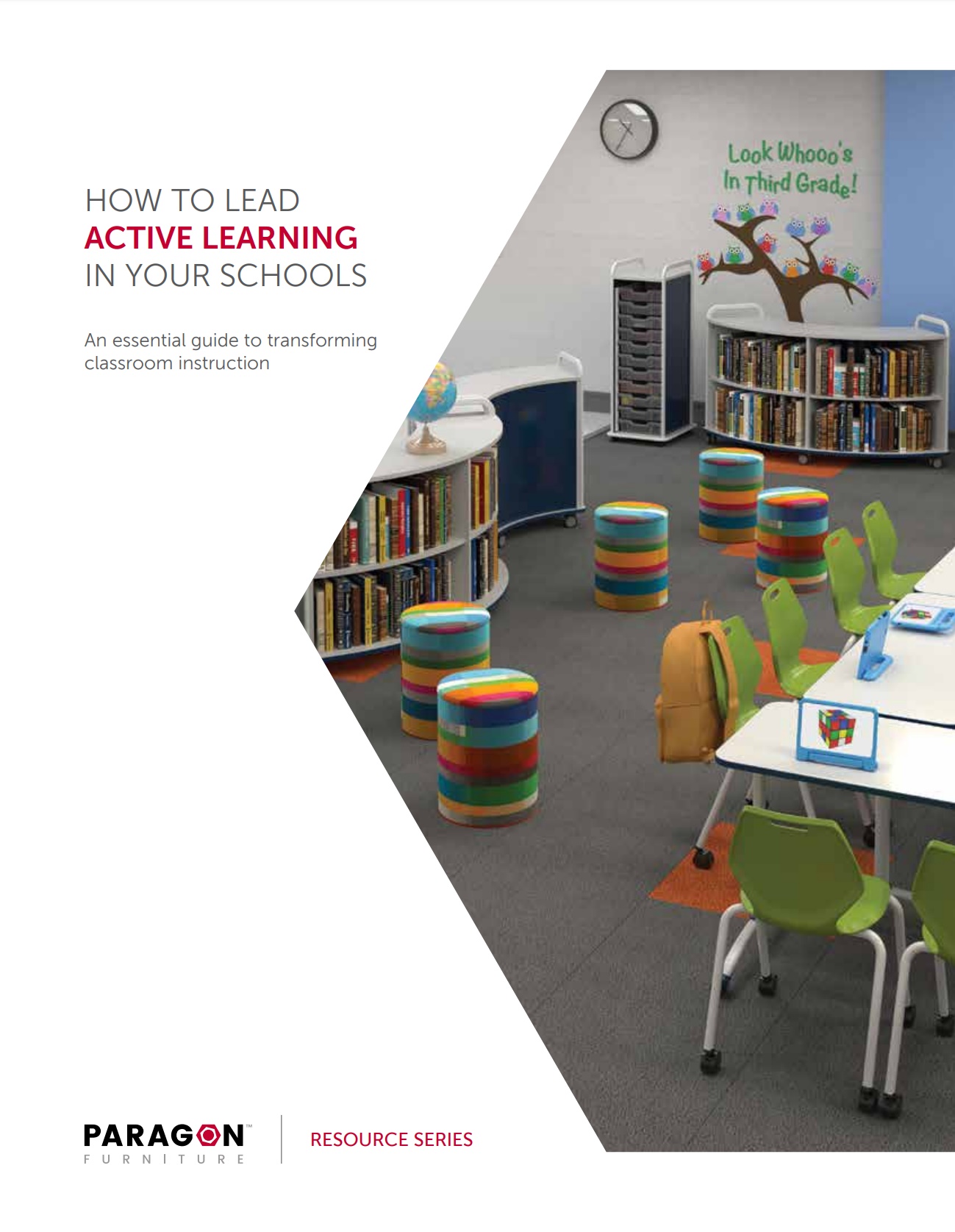biophilic design in the classroom
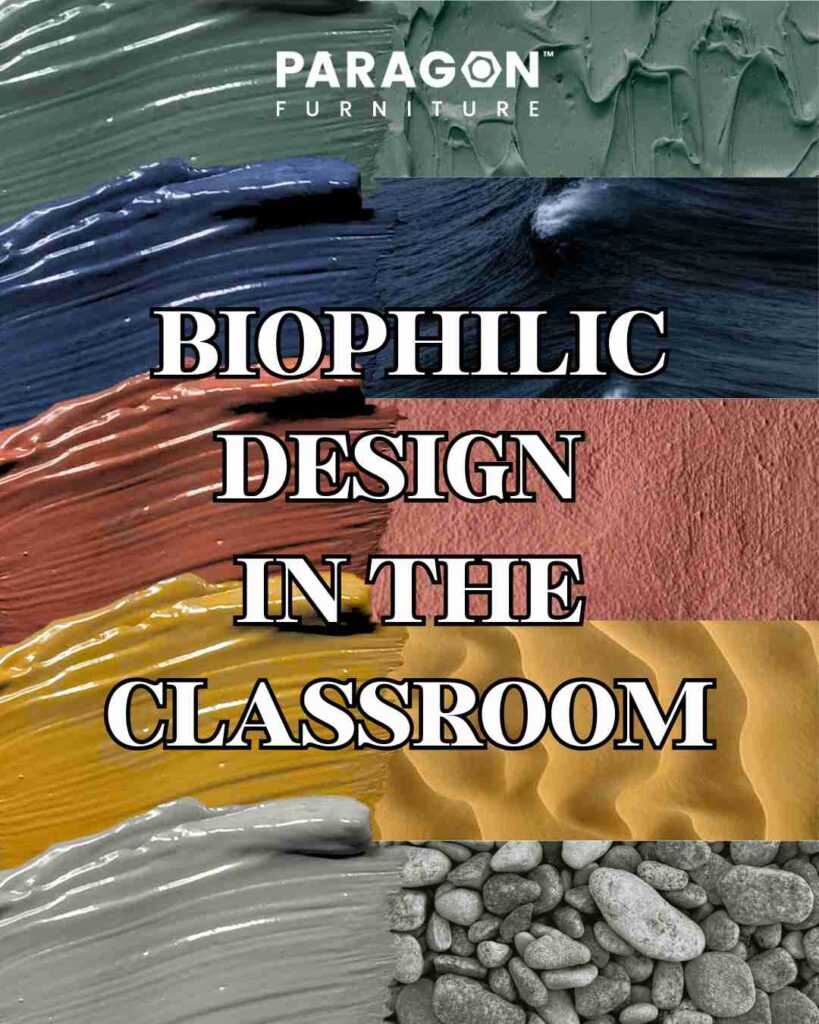
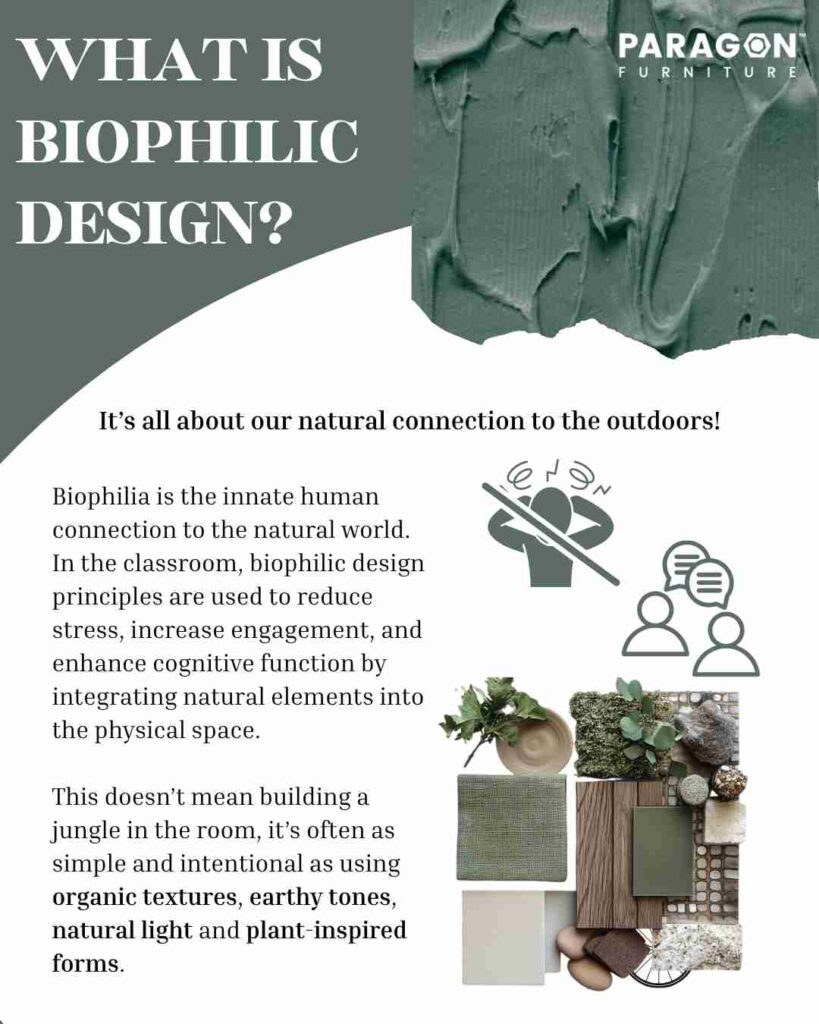
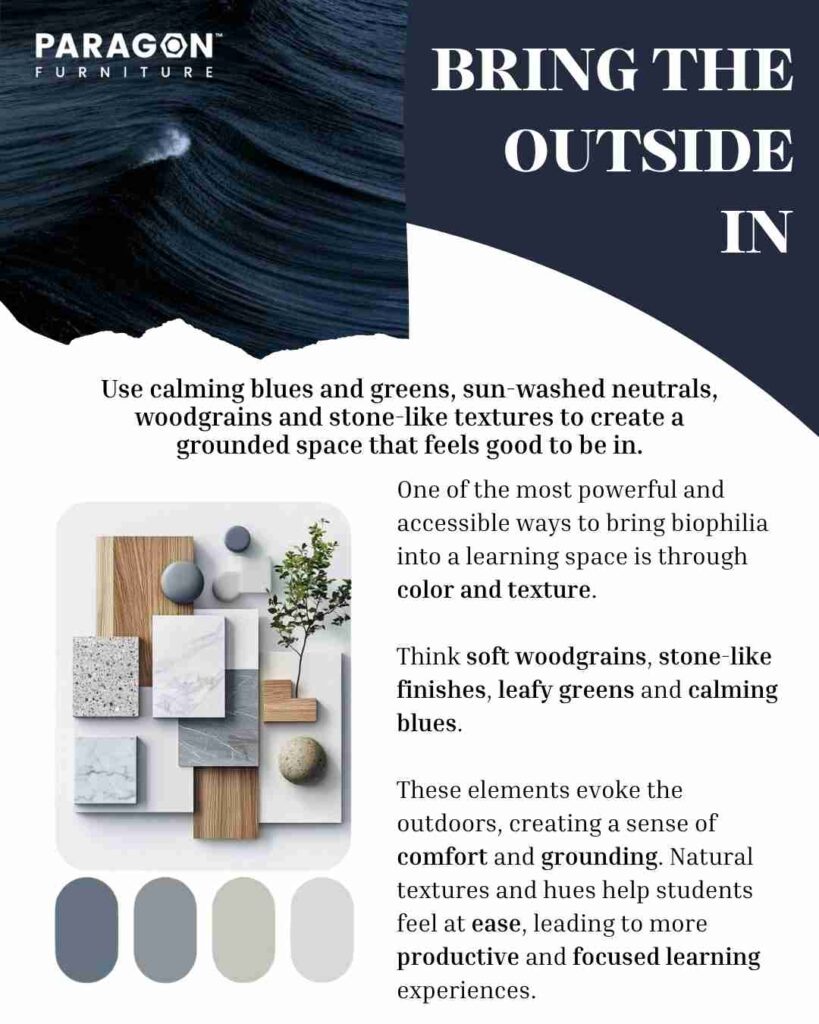
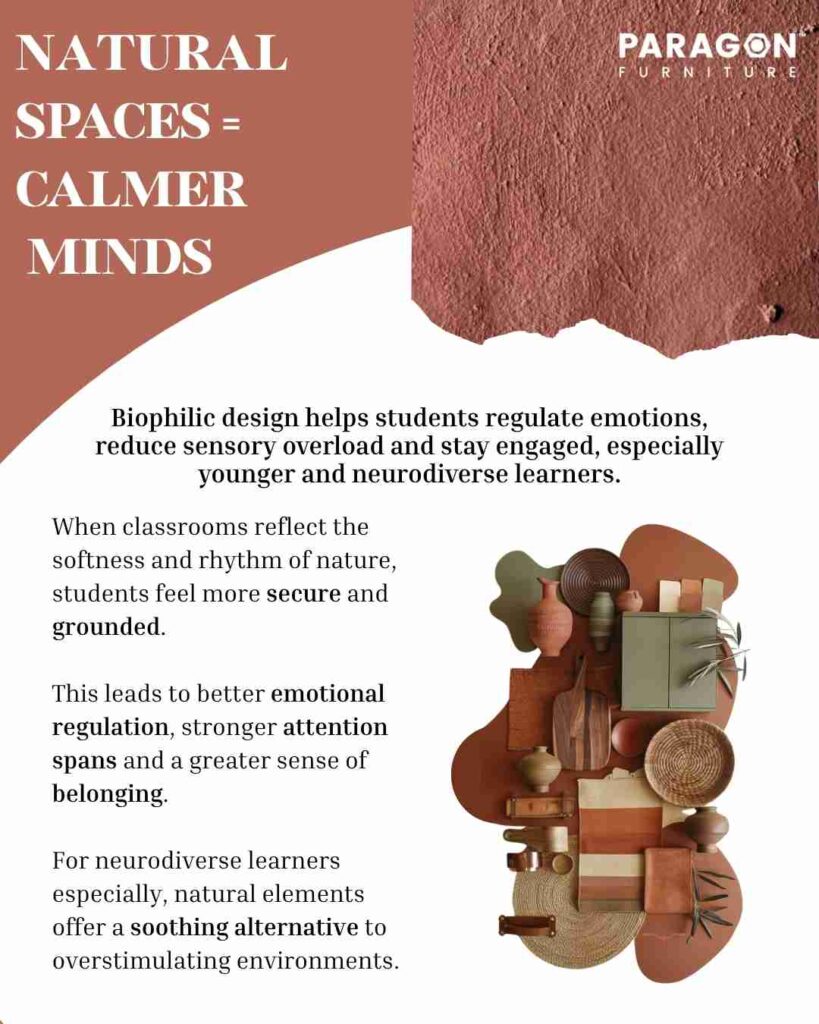
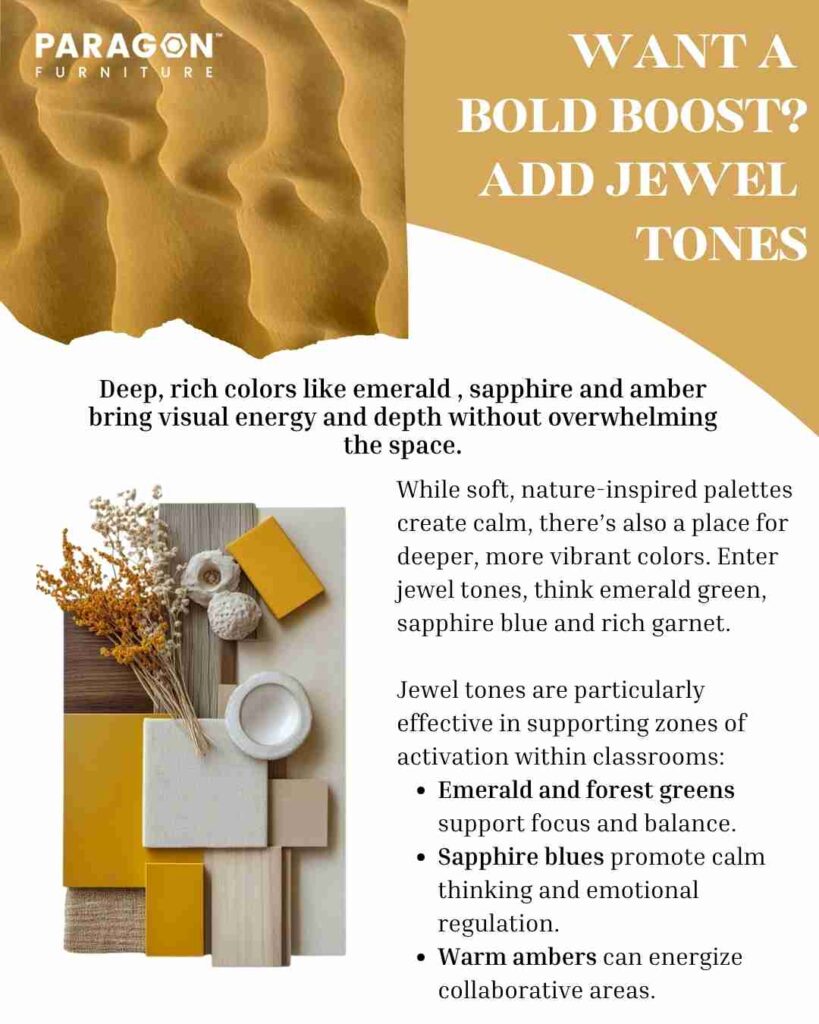
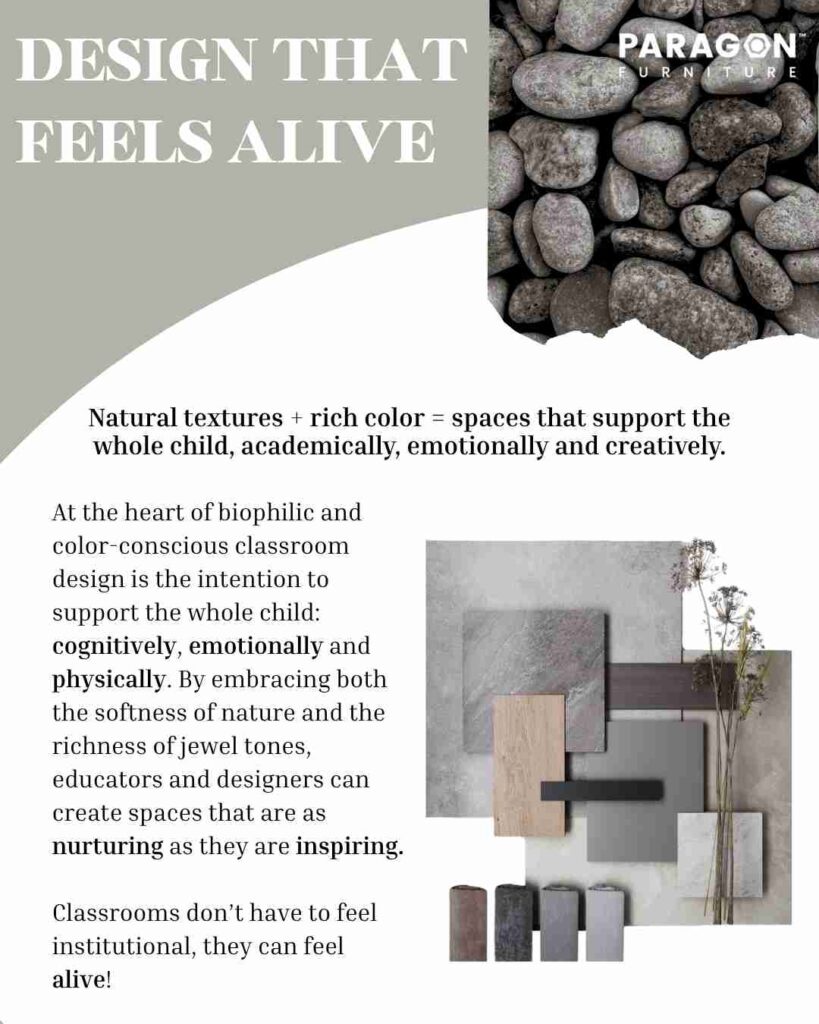
As classrooms evolve, so does the way we design them. More than ever, educators and designers are leaning into nature to create spaces that support both learning and well-being. From soft textures to earthy tones and vibrant jewel accents, biophilic design is changing the way students feel, focus, and thrive in school. Here’s how thoughtful color and texture choices can bring the outdoors in—and make a big impact.
WHAT IS BIOPHILIC DESIGN?
It’s all about our natural connection to the outdoors!
Biophilia is the innate human connection to the natural world. In the classroom, biophilic design principles are used to reduce stress, increase engagement, and enhance cognitive function by integrating natural elements into the physical space. This doesn’t mean building a jungle in the room, it’s often as simple and intentional as using organic textures, earthy tones, natural light and plant-inspired forms.
Humans have an innate affinity for nature, what scientists call the biophilia hypothesis, which suggests we subconsciously seek connections to life and natural systems. In educational environments, biophilic design employs strategies like visual connections to nature, plant life, diffused lighting and biomorphic patterns to recreate elements of the natural world indoors.
Research shows these elements support better cognition, lower stress and improve well-being in students and teachers alike. In some cases, classrooms enriched with biophilic features have seen higher test scores, fewer behavior incidents and reduced absenteeism.
References and Further Reading:
The Power of Biophilic Design in Learning Spaces: What, How, and Why? – EDspaces
BRING THE OUTSIDE IN
Use calming blues and greens, sun-washed neutrals, woodgrains and stone-like textures to create a grounded space that feels good to be in.
One of the most powerful and accessible ways to bring biophilia into a learning space is through color and texture. Think soft woodgrains, stone-like finishes, leafy greens and calming blues. These elements evoke the outdoors, creating a sense of comfort and grounding. Natural textures and hues help students feel at ease, leading to more productive and focused learning experiences.
Integrating earth tones, like greens, browns, beiges and soft neutrals into classroom palettes helps create spaces that echo natural landscapes and materials.
Studies demonstrate that classrooms repainted in expert selected color schemes can significantly increase feelings of engagement and positivity among both students and teachers. Teachers report that post-paint classrooms felt happier, calmer and more focused.
Textures and materials that evoke nature, for example woodgrain, stone patterns, woven textiles and biomorphic forms reinforce soothing visual connections and offer tactile interest without distracting learners.
References and Further Reading:
NATURAL SPACES = CALMER MINDS
Biophilic design helps students regulate emotions, reduce sensory overload and stay engaged, especially younger and neurodiverse learners.
When classrooms reflect the softness and rhythm of nature, students feel more secure and grounded.
This leads to better emotional regulation, stronger attention spans and a greater sense of belonging. For neurodiverse learners especially, natural elements offer a soothing alternative to overstimulating environments.
When design taps into natural rhythms and textures, student feel more secure and mentally balances. Exposure to biophilic classroom environments have been linked to reduce physiological stress, measure via heart-rate variability, and improved academic performance and self-reported well-being.
Real-world school implementations (like Bethel Hanberry Elementary) using these design strategies saw fewer behavior referrals, improved teacher retention, lower absenteeism and higher test scores after one year of occupancy.
Additional reviews confirm that biophilic design improves attention, creativity and overall student mood, even when the nature exposure is indirect, such as images of natural forms or fractal patterns.
References and Further Reading:
Outcomes of Biophilic Design for Schools
Research Digest: Biophilic design | Children & Nature Network
WANT A BOLD BOOST? ADD JEWEL TONES
Deep, rich colors like emerald , sapphire and amber bring visual energy and depth without overwhelming the space.
While soft, nature-inspired palettes create calm, there’s also a place for deeper, more vibrant colors. Enter jewel tones, think emerald green, sapphire blue and rich garnet. Jewel tones are particularly effective in supporting zones of activation within classrooms:
- Emerald and forest greens support focus and balance.
- Sapphire blues promote calm thinking and emotional regulation.
- Warm ambers can energize collaborative areas.
While grounding base colors provide calm and cohesion, jewel tones, like emerald green, sapphire blue and amber, add strategic visual interest and energy to a space.
Color psychology suggests these deeper, saturated hues can increase alertness, creative thinking, and emotional engagement especially when used as zonal accents rather than full-room palettes.
Pairing calming tones (greens and blues) with warmer accents (amber, red, yellow) helps balance concentration zones and collaboration zones in classrooms, supporting both focus and interaction.
References and Further Reading:
The Impact of Color Psychology on Classroom Creativity | Creativity Blog by sliiidea
DESIGN THAT FEELS ALIVE
Natural textures + rich color = spaces that support the whole child, academically, emotionally and creatively.
At the heart of biophilic and color-conscious classroom design is the intention to support the whole child: cognitively, emotionally and physically. By embracing both the softness of nature and the richness of jewel tones, educators and designers can create spaces that are as nurturing as they are inspiring. Classrooms don’t have to feel institutional, they can feel alive!
By weaving nature-inspired soft tones and textures with strategic jewel-toned accents, educators and designers can craft classrooms that support students emotionally, cognitively and socially.
From reduced anxiety and better attention to enhanced creativity and engagement, biophilic-rich classrooms offer a design-forward approach that nurtures the whole child and aligns beautifully with furniture and spaces that feel warm, intentional and alive.
References and Further Reading:
The Power of Biophilic Design in Learning Spaces: What, How, and Why? – EDspaces
Designing Schools and Educational Spaces with a Biophilic Approach – Architecture Magazine
Download our step-by-step implementation guide to help create active learning spaces!
CLASSROOM DESIGN FILES
Access all of the design resources you need to create a beautiful classroom!
